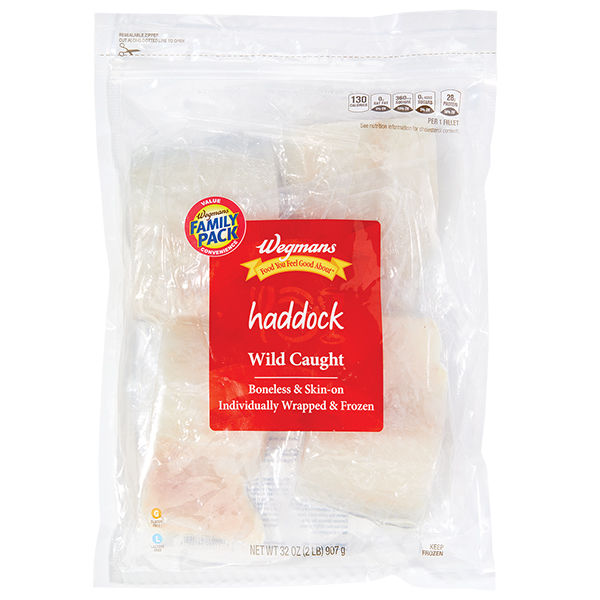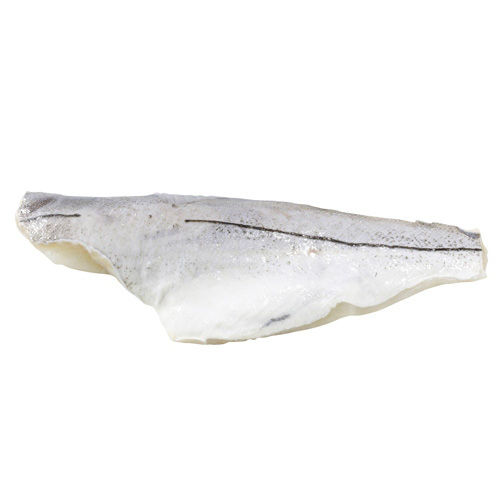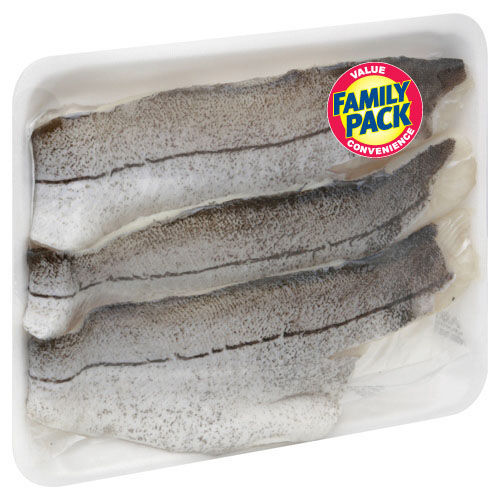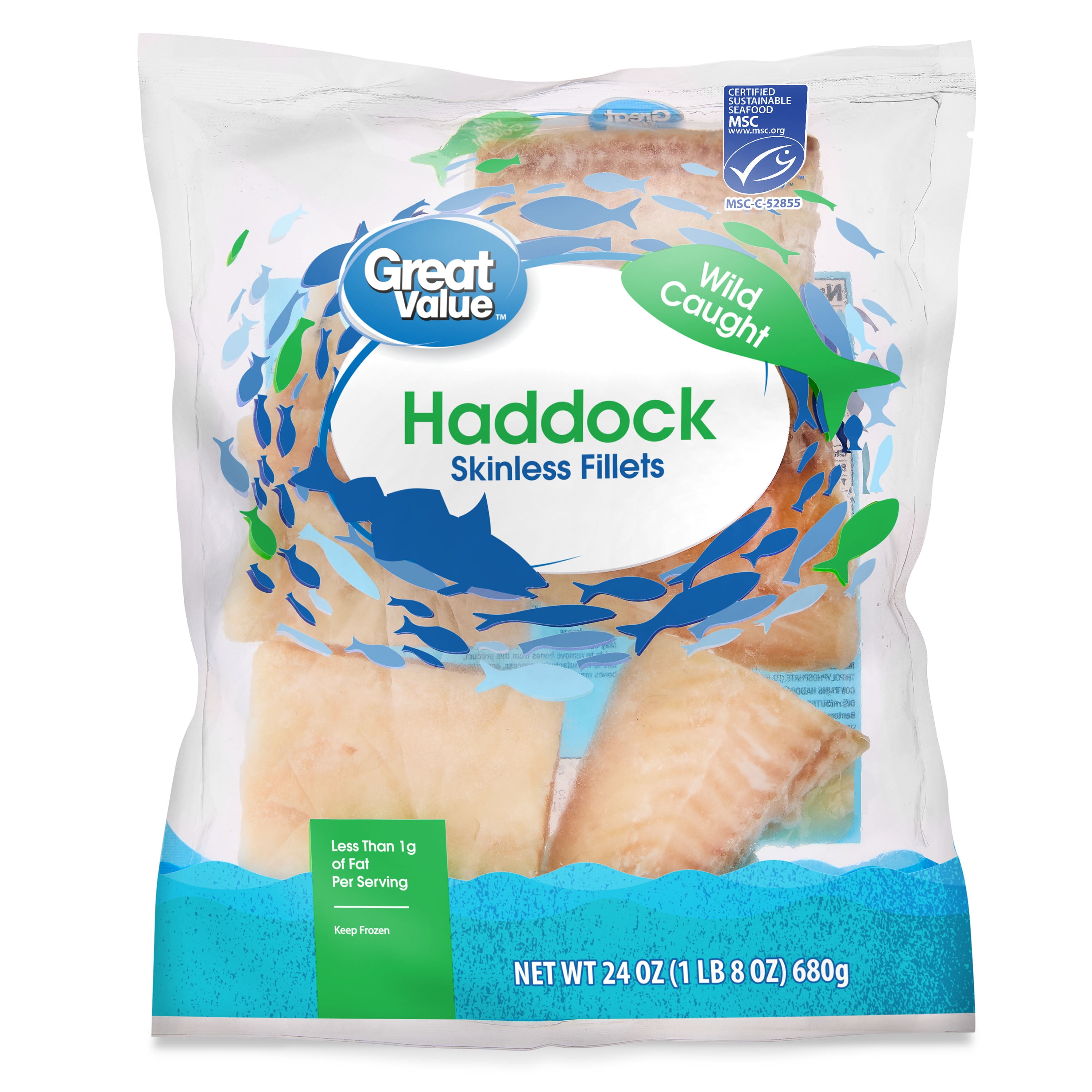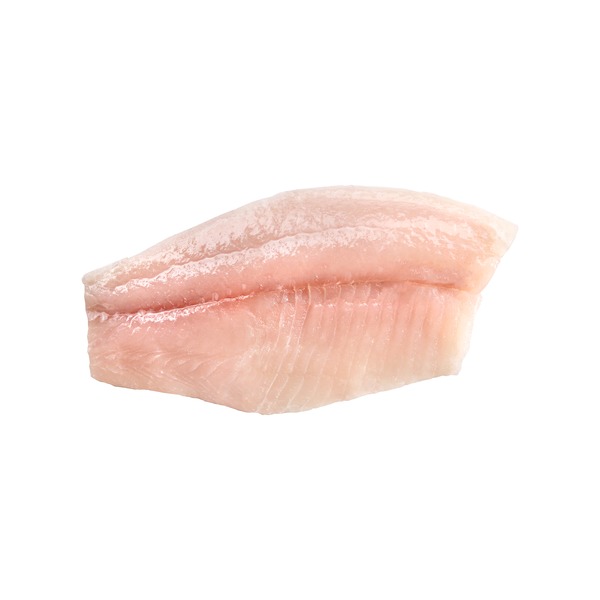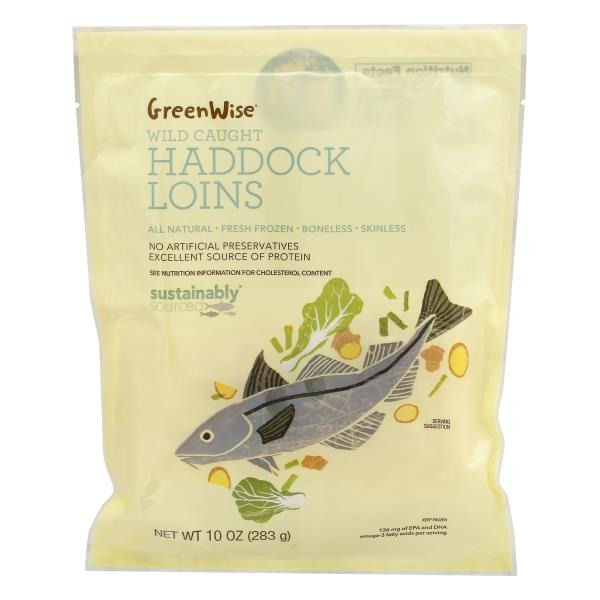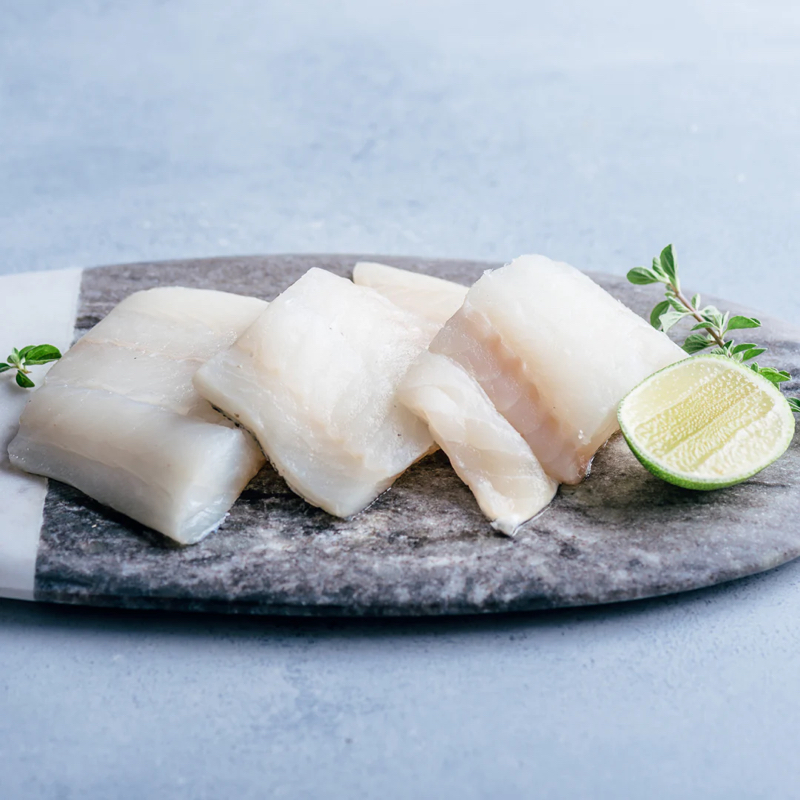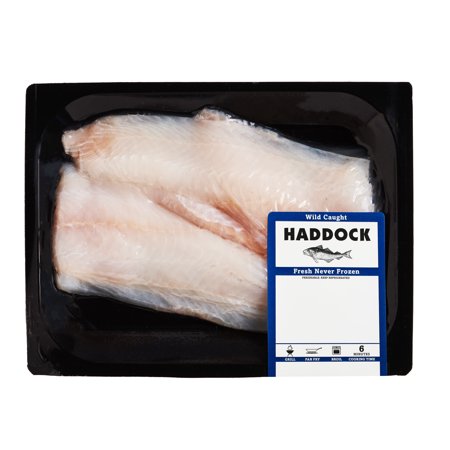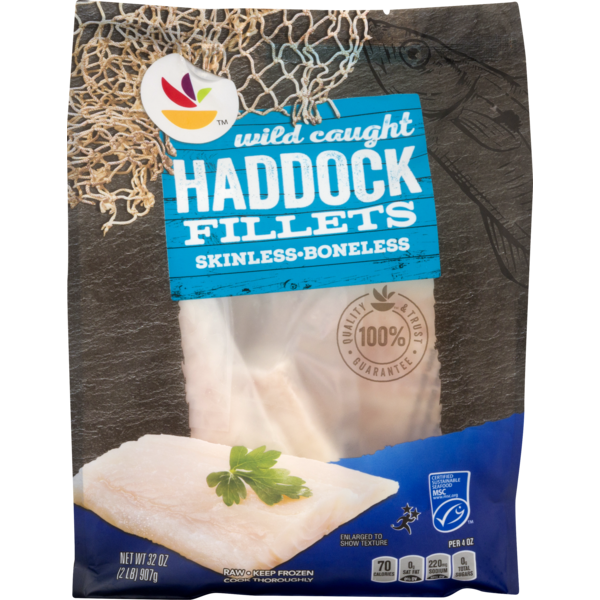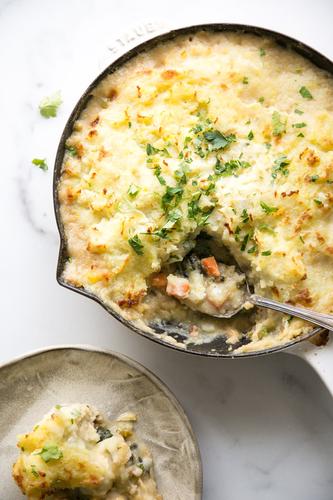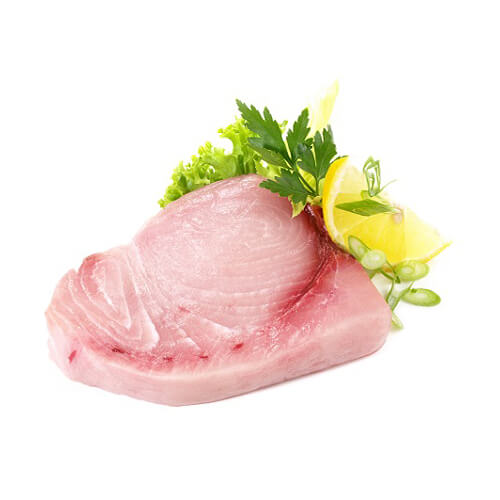MAIN DISHES
SOUPS
LUNCH
Haddock
Haddock is a popular white fish species belonging to the Gadidae family, primarily found in the North Atlantic Ocean. Known for its mild, slightly sweet flavor and flaky texture, haddock is commonly used in a variety of culinary dishes, including the British classic, fish and chips. This lean protein source is rich in essential vitamins and minerals, such as vitamin D, vitamin B6, and potassium, offering numerous health benefits.
When selecting haddock, look for firm, white flesh, and a fresh, clean smell. It can be prepared in several ways, such as baking, broiling, grilling, and pan-frying. Adding simple seasonings and herbs will enhance its natural flavor and provide a delicious, healthy meal option.
0%
CARBS
2%
FAT
98%
PROTEIN
223 Haddock Products
Wegmans Frozen Wild Caught Haddock, FAMILY PACK
Wegmans Fresh Boneless Haddock Fillets
Wegmans Fresh Haddock Fillets, FAMILY PACK
Wild Caught Haddock Skinless Fillets
Haddock Fillets
Waterfront Bistro Haddock Fillets, Wild Atlantic
GreenWise Wild Caught Haddock Loins
Haddock
Wild Caught Haddock Portions, 0.50 - 1.10 lb
Food Lion Wild Caught Haddock Fillets Skinless • Boneless
Used In 4 Recipes
Haddock Is Frequently Used With
Haddock FAQ
When cooking with haddock, individuals often have several common queries, usually relating to how to enhance its mild flavor and achieve a perfectly cooked, flaky texture. It's important to be aware that haddock, like most white fish, can easily become overcooked and dry. Therefore, carefully monitoring the cooking time is crucial. Additionally, while haddock is delicious with minimal seasoning, it can also take on a wide variety of flavors, making it incredibly versatile in cooking. A great way to get the most out of haddock is to experiment with different cuisines and flavors, like a spiced Indian masala or a Mediterranean herb mix. Cooking it on the bone can further enhance its flavor. To avoid the fish sticking to the pan, make sure the surface is hot before adding the fish.
What is the best way to cook haddock?
How do I avoid overcooking haddock?
Why did my haddock turn rubbery?
How can I make my haddock more flavorful?
How do I get a crispy exterior on my haddock?
Can I grill haddock?
Do I need to remove the skin before cooking haddock?
What can I serve with haddock?
Can I marinate haddock?
I don't have haddock; can I substitute another fish in a recipe?
Expiration & Storage Tips
When does haddock expire?
Fresh haddock, when refrigerated properly (between 0 to 4°C or 32 to 40°F), can last up to 1-2 days. If you'd like to keep it longer, freezing is your best bet where it can stay good for 4-6 months. Always remember to consume it within 2-3 days once it has been thawed. The use-by date on the packaging can guide you, but it's always better to remain cautious and use your senses.
How do you tell if haddock is bad?
Fresh haddock should have a mild scent, similar to the ocean. If it smells strongly fishy or off, it's likely spoiled. Additionally, check the texture and appearance. If it feels slimy, sticky, or shows any signs of discoloration or patches, it's better to discard it. Remember that consuming bad fish can lead to food poisoning and is not worth the risk.
Tips for storing haddock to extend shelf life
• Store fresh haddock in the refrigerator as soon as you get home from the market. Keeping it cool is crucial for preventing bacterial growth.
• If you want to freeze haddock, rinse, pat dry, wrap tightly in plastic wrap, and then in aluminum foil. This will prevent any freezer burn and maintain the quality of the fish.
• If you want to thaw frozen haddock, do it in the refrigerator overnight rather than using a microwave or running it under hot water. Fast defrosting methods can affect the texture and taste.
• Lastly, if you buy haddock fillets with the skin on, leave the skin till you're ready to cook, it helps retain moisture and flavor.
EXPIRES WITHIN
6 - 11
DAYS
Health Info
Macros
0g
CARBS
0g
FAT
28g
PROTEIN
Allowed on these diets
LOW FAT
HIGH CALCIUM
KETO
PALEO
WHOLE 30
MEDITERRANEAN
LOW CARB
LACTOSE FREE
GLUTEN FREE
Contains these allergens
FISH

